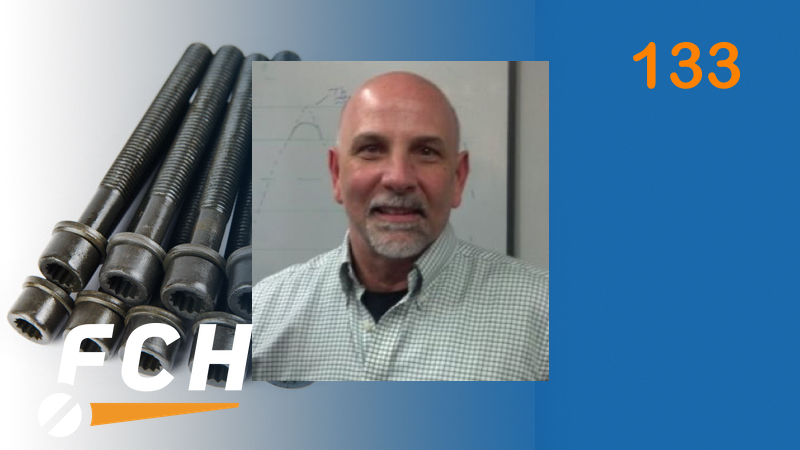What should you do when your customer asks you to zinc plate socket cap screws?
This edition of the Fastener Training Minute with Carmen Vertullo was originally published October 25, 2018 as “What are the issues that relate to zinc plating socket cap screws” during episode 133 of Fully Threaded Radio.
The reason why you are listening to the Fastener Training Minute is so you can learn more about the issues that relate to zinc plating alloy steel socket cap screws. Typically the issue has to do with hydrogen embrittlement. That’s not what this topic is about. It’s just about some of the things you need to consider when your customers ask you to zinc plate these alloy steel socket screws.
In the inch world, the specifications for these cap screws come from ASTM A574. They are high-strength 180 KSI. In the metric world, they are specified by ISO 898-1. They have the metric property class 12.9 usually, though there are some options. The metric socket screws are high strength as well, comparable to the ASTM A574 socket screws.
When our customers ask us to zinc plate these high strength socket screws, we usually have a big concern with that monster called hydrogen embrittlement. Well, this topic is not about hydrogen embrittlement, but it’s another of the things you need to consider. But what do you do when your customer asks you to do this particularly risky process of zinc plating high-strength socket screws.
Well, let’s assume for a moment that the customer really is not all that smart. If they were they probably wouldn’t be asking us do this in the first place. But let’s assume they’re not and they could use a little bit of education. You might want to ask them; “Why are you using zinc plated?” or “why is your end user using zinc plated alloy steel socket screws?”. In most cases, especially when they’re small-sized, they like them because they’re shiny. They look nice. So that’s the only issue and the quantity is small in many cases. It might make sense just to replace those with stainless steel screws, which are generally off-the-shelf, no plating and no lead times. You don’t have to do any hydrogen embrittlement testing. You don’t risk hydrogen embrittlement and so on. But be careful if you choose to suggest to your customer that they replace a zinc-plated socket screw with a stainless steel socket screw. You want to be careful. because it’s really an engineering decision on their part, and only a recommendation on your part.
There are some other things to be concerned about: material compatibility for instance. But there are some nice benefits to using stainless steel in my opinion: it looks better. Some people might like the look of zinc, but I think stainless looks better. The corrosion resistance factor is much better. We don’t have any risk of thread fit issues, and of course the hydrogen embrittlement risk completely goes away. It’ll be off the shelf and we don’t have to worry about testing or lead times and stainless steel may actually be less expensive, especially for smaller lots and especially considering things like plating baking and the cost of testing. Now if it turns out that the customer would like some strength, we have some other options as well, though they may not be off-the-shelf. There are some high strength stainless Steels such as A286 that could potentially replace an alloy steel socket cap screw. All those things are important to take into consideration.
Always be careful recommending a change though: you are not the engineer. That’s the customers job. If they need help with that, you can always send them over here to the AIM Test Lab, or maybe you and they could take a class at the Fastener Training Institute and learn how to properly and safely suggest recommendations for changing fastener materials.
